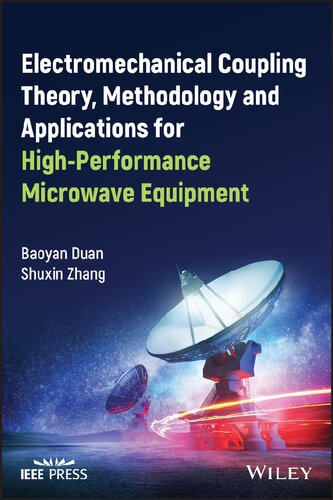

Most ebook files are in PDF format, so you can easily read them using various software such as Foxit Reader or directly on the Google Chrome browser.
Some ebook files are released by publishers in other formats such as .awz, .mobi, .epub, .fb2, etc. You may need to install specific software to read these formats on mobile/PC, such as Calibre.
Please read the tutorial at this link: https://ebookbell.com/faq
We offer FREE conversion to the popular formats you request; however, this may take some time. Therefore, right after payment, please email us, and we will try to provide the service as quickly as possible.
For some exceptional file formats or broken links (if any), please refrain from opening any disputes. Instead, email us first, and we will try to assist within a maximum of 6 hours.
EbookBell Team

4.8
84 reviewsElectromechanical Coupling Theory, Methodology, and Applications for High-Performance Microwave Equipment is an authoritative and up-to-date guide to the structural, mechanical, and electrical aspects of electromechanical coupling. Addressing control, electromagnetism, and structural engineering, this comprehensive reference covers the electromechanical coupling of high-performance microwave electronic equipment (MEE), such as antennas, radar, large radio telescopes, and telecommunication and navigation equipment.
The book is divided into four main sections, beginning with an introduction to electromechanical coupling (EMC)theory and a detailed description of the multi-field coupling model (MFCM) and the influence mechanism (IM) of nonlinear factors of antenna-servo-feeder systems on performance. Subsequent sections discuss MFCM- and IM-based design methodology, EMC-based measurement and testing, computer software for coupling analysis and design of electronic equipment, and various engineering applications of EMC theory and the IM of typical electronic equipment. In addition, the book:
Electromechanical Coupling Theory, Methodology, and Applications for High-Performance Microwave Equipment is essential reading for circuit designers, microwave engineers, researchers working with high-frequency microwave engineering, and engineers working with integrated circuits in radar, communications, IoT, antenna engineering, and remotesensing.